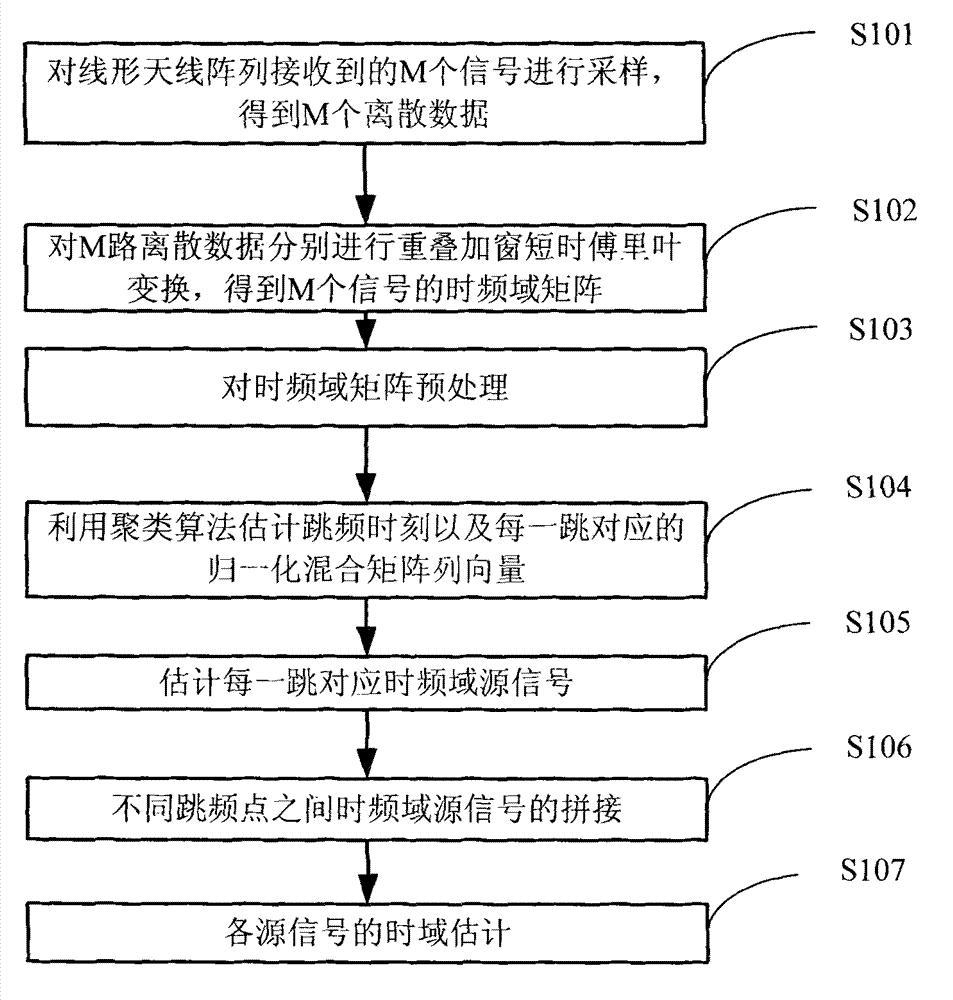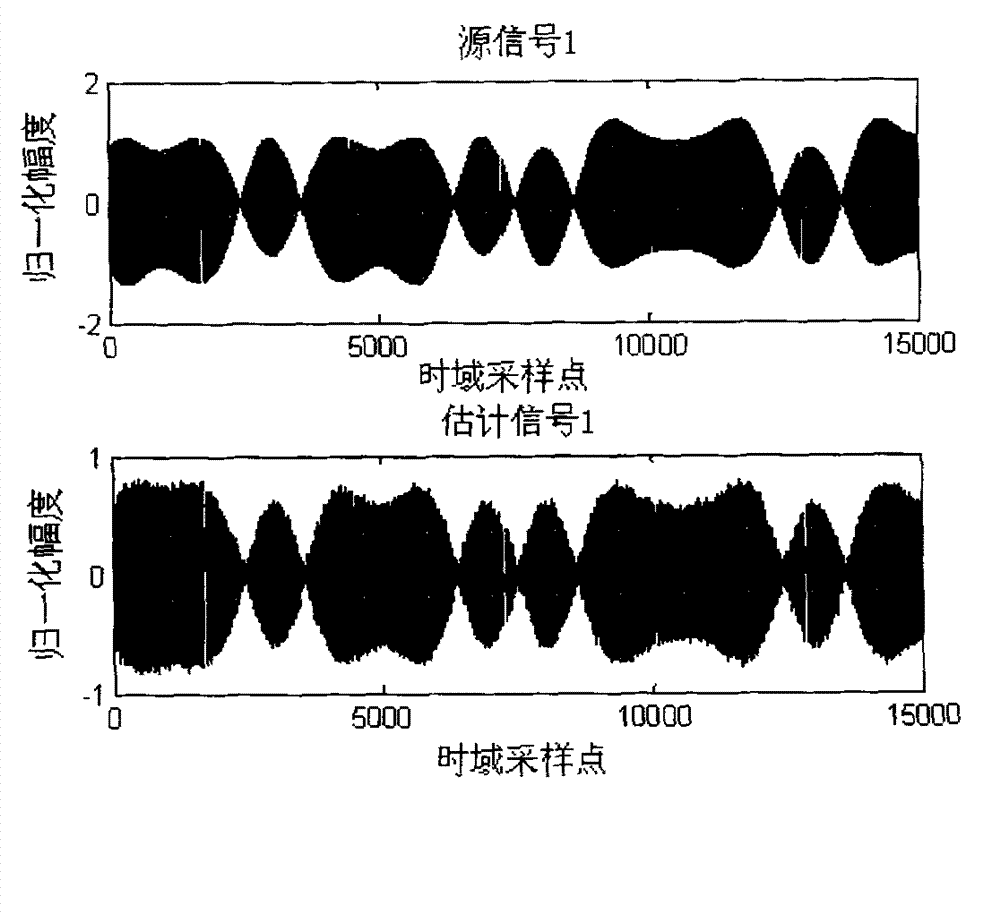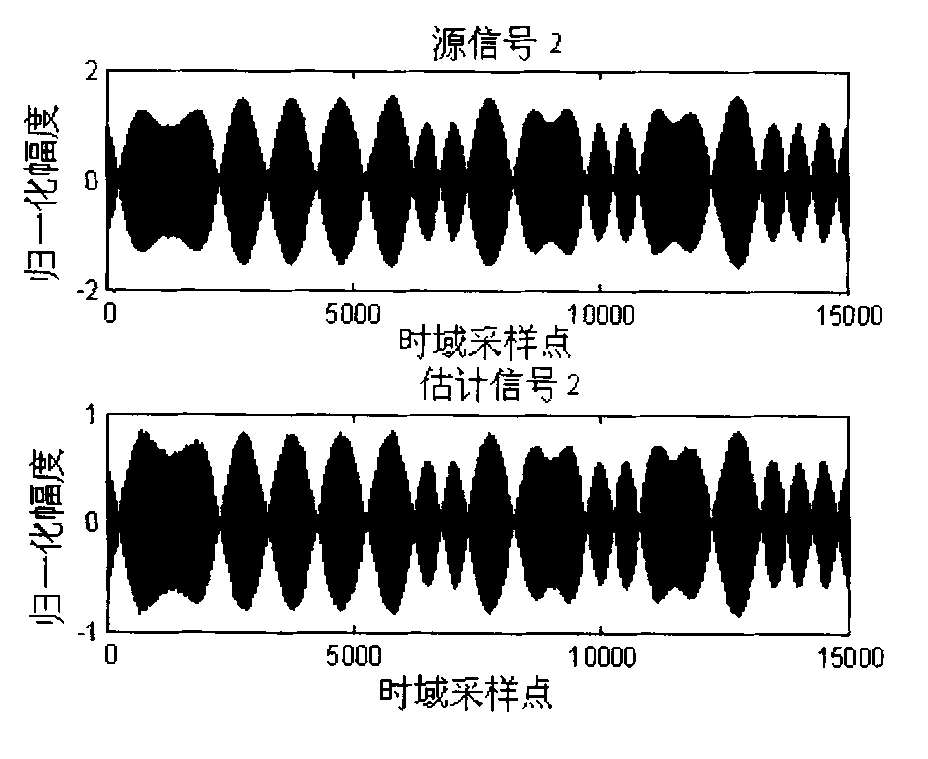Clustering-based blind source separation method for synchronous orthogonal frequency hopping signals
A frequency-hopping signal and blind source separation technology, applied in multi-frequency code systems, space transmit diversity, diversity/multi-antenna systems, etc., can solve problems such as blind estimation of multiple frequency-hopping signals
- Summary
- Abstract
- Description
- Claims
- Application Information
AI Technical Summary
Problems solved by technology
Method used
Image
Examples
Embodiment 1
[0150] The hopping characteristics and Vandermont characteristics of the frequency-hopping signal mixing matrix when receiving with a uniform linear array, refer to figure 1 , the steps of the inventive method are as follows:
[0151] Step 1), using a linear array array antenna containing M array elements to receive signals from a plurality of synchronous orthogonal frequency hopping stations, and sampling the received M signals, the sampling frequency is f s , to get M discrete data, namely
[0152] x m % ( k ) = x m ( k · T s ) m = 1,2 , L , M - - - ( 13 )
[0153] where k represent...
Embodiment 2
[0197] In order to verify the accuracy of the frequency hopping signal estimated by the present invention, the underdetermined blind separation algorithm of the frequency hopping signal proposed by the present invention is simulated. Assume that there are 4 frequency hopping source signals, which are received by a uniform line array with 2 array elements, frequency hopping frequency set [1:0.5:8]MHz, sampling frequency fs=20MHz, BPSK modulation mode, symbol rate respectively 20kbps, 40kbps, 25kbps, 50kbps, the incident angles are -20°, 60°, 80°, -40° respectively, due to the limitation of computer memory, each simulation processes 3 frequency hopping points, the number of FFT points is 4096, and the interval of each sliding window is 256 samples point.
[0198] Figure 2-5 The frequency-hopping signal estimated by the present invention and the time-domain waveform diagram of the source signal are given respectively. It can be seen from the figure that the time-domain wavefor...
PUM
 Login to View More
Login to View More Abstract
Description
Claims
Application Information
 Login to View More
Login to View More - R&D
- Intellectual Property
- Life Sciences
- Materials
- Tech Scout
- Unparalleled Data Quality
- Higher Quality Content
- 60% Fewer Hallucinations
Browse by: Latest US Patents, China's latest patents, Technical Efficacy Thesaurus, Application Domain, Technology Topic, Popular Technical Reports.
© 2025 PatSnap. All rights reserved.Legal|Privacy policy|Modern Slavery Act Transparency Statement|Sitemap|About US| Contact US: help@patsnap.com



